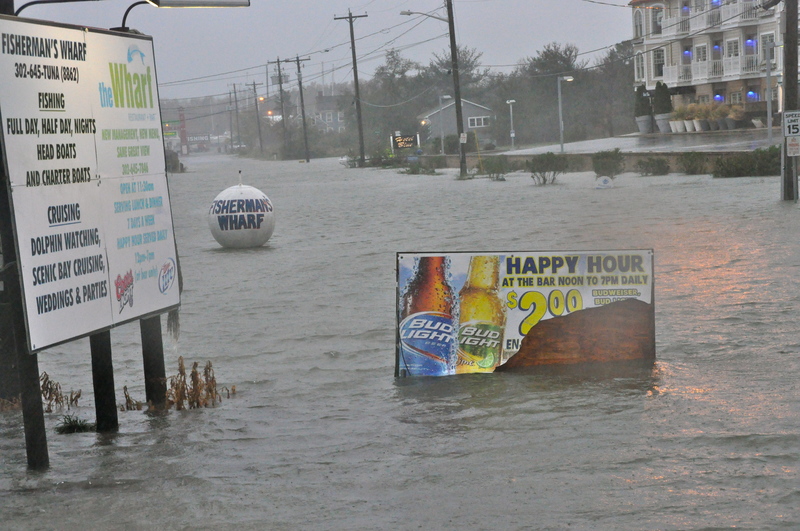When the next big coastal storm hits, Lewes wants to be ready.
Through a state Coastal Management Assistance Grant, the city contracted with consultant Rebecca Quinn of RC Quinn Consulting to analyze Lewes' code book and develop recommendations to reduce the city's vulnerability to flooding – a process that will also qualify residents for flood insurance discounts.
Insurance breaks are determined by the Federal Emergency Management Agency's Community Rating System, which awards points to municipalities that take proactive measures, such as implementing stricter regulations, to reduce flood risks and potential damage. Municipalities that exceed minimum requirements in floodplain management qualify for discounts.
“Reducing what we can in flood insurance is one objective, but that's directly related to reducing damage, and I think that's what our real goal should be,” Quinn said.
Lewes has the smallest discount of participating Delaware beach towns. Bethany Beach, Rehoboth Beach, Dewey Beach, South Bethany and Fenwick Island have each achieved a Class 8 rating on the CRS scale, entitling them to an 10 percent discount on flood insurance. While very close to Class 8, Lewes remains rated as a Class 9 municipality, which provides only a 5 percent discount. Lewes has been a Class 9 town since it joined CRS in 1992.
A municipality that achieves a Class 1 rating receives a 45 percent discount, but very few municipalities achieve higher than Class 7, Quinn said.
“It's not inconceivable that if they really scour what I put forward here, it's possible Lewes could get to a 7,” she said. “That would probably take a lot of work.”
Quinn said there are steps Lewes can take immediately to bump its rating up to a Class 8. Possibly the quickest change Lewes could make, Quinn said, is establishing its minimum building height one foot higher than FEMA's base flood elevation. Base flood elevation is what FEMA uses to draw maps and what banks use for insurance. Due to better mapping of land heights and other studies, Quinn said, FEMA is soon planning to lower its base flood elevation one foot, so if the city just maintains the current minimum height, it could achieve more CRS points.
“To me, that is the lowest hanging fruit,” Quinn said.
Lewes Building Official Henry Baynum said there is not a specific base flood elevation throughout the city, as it varies depending on a home's location.
Requiring a higher minimum height will be more expensive for home builders upfront, but FEMA studies show it pays off in the long run through reduced damage and insurance rates.
After the easier measures are accomplished, Quinn said, the city could work incrementally over time adding and changing regulations or ordinances to continue increasing its rating.
Mayor Ted Becker said the next step is to work with Quinn to draft an ordinance to combine two sections of city code that map out floodplain building regulations. Through her analysis, Quinn found contradicting sections of the code, resulting in confusion. By combining the two, she said, the city will offer clear direction for homeowners and builders.
Quinn supplied the city with a draft ordinance already in the works at DNREC, which it could use as a model.
Delaware has never been directly hit by a hurricane, and Lewes' flood insurance claims have remained very low since joining the National Flood Insurance Program in 1977. As of December 2013, Councilwoman Bonnie Osler said, only 72 claims amounting to $620,000 has been paid out in Lewes over the program's 37 years. Quinn said that doesn't mean city officials should get complacent.
“What that tells me is that you all have been lucky,” she said. “Just because it hasn't happened in our time or even during the history of this program, doesn't mean it won't.”




















































